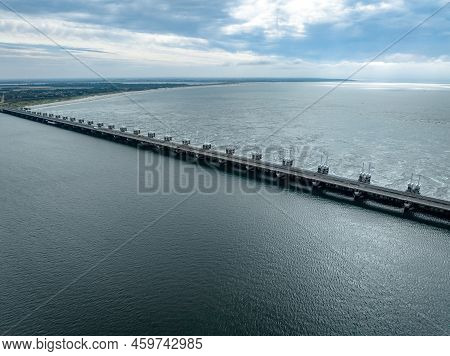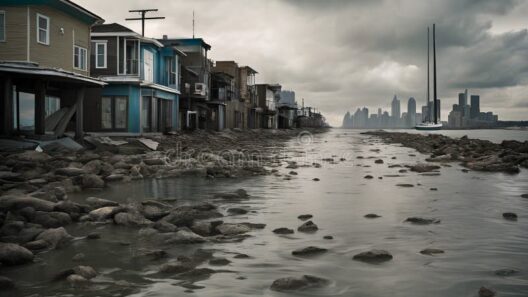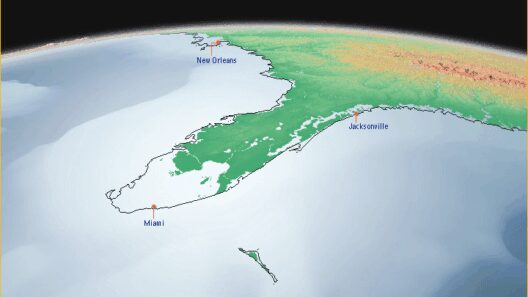Rising sea levels have emerged as one of the most pressing environmental challenges of our time, with the potential to reshape coastlines and submerge entire communities. As a country renowned for its low-lying topography, the Netherlands is acutely aware of the threats posed by climate change. The nation has transformed its vulnerability into a pioneering paradigm for effective coastal management and adaptation methods.
The Historical Context: From Vulnerability to Resilience
The Netherlands is situated below sea level, with about a quarter of its landmass currently at risk of flooding. This precarious geographical reality has fostered a rich history of water management and engineering solutions that have defined the nation’s identity. The story of Dutch water management is not a new one; it dates back centuries when the first dikes were erected to protect farmland and settlements. However, as climate change accelerates the rate of sea-level rise, these historical methods have evolved into sophisticated, multifaceted approaches.
Central to the historical context is the Netherlands’ innovative soil reclamation techniques, which began in the Middle Ages. By enclosing areas with dikes and pumping out the water, the Dutch transformed marshlands into arable land. This ingenuity, though admirable, comes at a cost as history teaches us the fine balance between progress and nature’s overwhelming forces.
Innovative Infrastructure: The Dikes and Beyond
Today, the Dutch have mastered the engineering of dikes and barriers, creating some of the most advanced structural defenses in the world. The Delta Works, a comprehensive series of dams, locks, dikes, and storm surge barriers, symbolizes this innovative spirit. Completed in the 1990s, this monumental project was primarily designed in response to the catastrophic North Sea Flood of 1953, which claimed over 1,800 lives and prompted the Dutch government to reassess its vulnerability to flooding.
One of the crown jewels of the Delta Works is the Maeslantkering, a colossal storm surge barrier located near Rotterdam. This engineering marvel operates automatically; it closes when water levels threaten to rise beyond a predetermined threshold, providing a shield against surges that could inundate the city. The ingenuity of the Maeslantkering lies not only in its size but also in its ability to be fully automated, requiring minimal human intervention in moments of crisis.
Beyond traditional storm barriers, the Netherlands has invested in green infrastructure, integrating natural systems into urban planning. The concept of “living with water” has emerged, where cities like Amsterdam embrace water as a resource rather than merely a threat. Floating neighborhoods and permeable surfaces are being developed, allowing rainwater to flow naturally into water bodies, thereby reducing flood risk while promoting biodiversity.
Community Engagement: The Human Element in Flood Prevention
Adaptive measures are not solely confined to grand engineering feats; engaging communities is just as crucial. The Dutch government prioritizes public awareness and involvement in flood defense initiatives. Local communities participate in “water boards,” organizations responsible for managing water levels and quality. These boards represent a model of local governance, allowing citizens to contribute their knowledge and concerns directly to flood management planning.
Moreover, educational programs targeting schoolchildren ensure that the next generation understands the significance of water management. Activities such as “Water Awareness Days” bring awareness to the threats of flooding and the importance of collective responsibility in flood resilience. This grassroots involvement fosters a sense of ownership and activism, as citizens become integral to the country’s ongoing fight against rising tides.
Looking Forward: Challenges and Opportunities
While the measures taken by the Netherlands have set a global standard, the future remains fraught with uncertainties. The pace of sea-level rise may exceed the projections of even the most advanced models, presenting challenges that require constant adaptation and re-evaluation of strategies. Issues such as land subsidence, urban development, and the increasing unpredictability of climate patterns add layers of complexity to an already intricate landscape.
In response to these unpredictabilities, research and innovation remain at the forefront of Dutch policy. Initiatives are underway to enhance predictive modeling of climate-related changes through partnerships with academic institutions and international organizations. These collaborations focus on developing sustainable technologies that can further bolster the nation’s defenses and promote the resilience of ecosystems.
While the Dutch methods are awe-inspiring, they offer a sobering reminder of the urgent need for global cooperation in addressing climate change. The situation in the Netherlands resonates with coastal communities around the world, compelling them to rethink their own strategies and prioritize sustainable practices. The exchange of knowledge across borders could lead to the advent of new solutions that harness both advanced engineering and community engagement to protect vulnerable populations globally.
The lessons learned by the Netherlands provide a fascinating lens into how a nation can confront its challenges with ingenuity and resilience. As the tides rise and threaten coastal settlements around the world, the Dutch story offers hope and a blueprint for action against the inexorable forces of nature.








